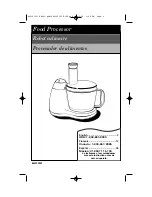
Debug
ARM DDI 0500D
Copyright © 2013-2014 ARM. All rights reserved.
11-2
ID021414
Non-Confidential
11.1
About debug
This section gives an overview of debug and describes the debug components. The processor
forms one component of a debug system.
The following methods of debugging an ARM processor based SoC exist:
Conventional JTAG debug (‘external’ debug)
This is invasive debug with the core halted using:
•
Breakpoints and watchpoints to halt the core on specific activity.
•
A debug connection to examine and modify registers and memory, and
provide single-step execution.
Conventional monitor debug (‘self-hosted’ debug)
This is invasive debug with the core running using a debug monitor that resides
in memory.
Figure 11-1
shows a typical external debug system.
Figure 11-1 Typical debug system
This typical system has several parts:
•
Debug host
.
•
Protocol converter
on page 11-3
.
•
Debug target
on page 11-3
.
•
The debug unit
on page 11-3
.
•
Self-hosted debug
on page 11-3
.
11.1.1
Debug host
The debug host is a computer, for example a personal computer, running a software debugger
such as the DS-5 Debugger. The debug host enables you to issue high-level commands such as
setting breakpoint at a certain location, or examining the contents of a memory address.
Debug host computer running suitable debugger tool
Debug
host
for example, DSTREAM or RealView ICE
Development system containing ARM processor
Debug
target
Protocol
converter
















































